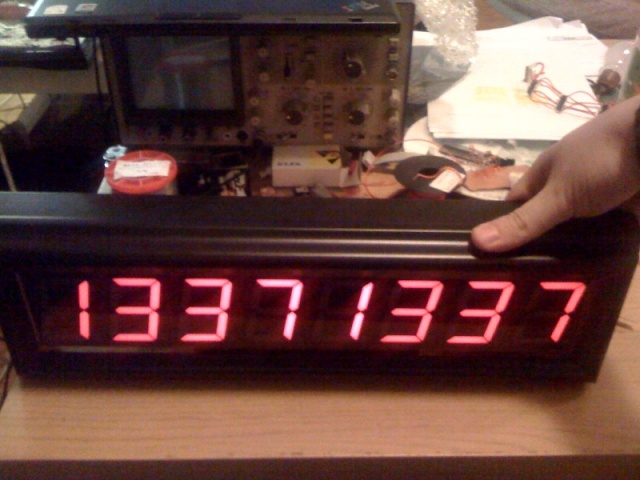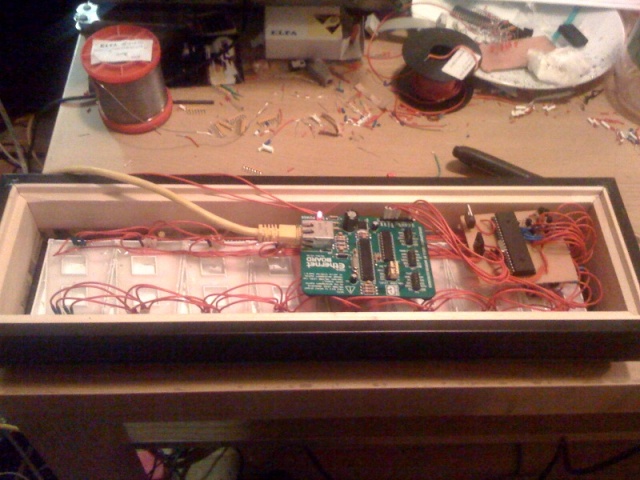Big timecode display
So, in the last blog entry I told you about the perl DMX backend that we are doing for the party project of ours.
We have concluded that we will have a bitchin’ intro show. And it will be timecode controlled. Every little audio / DMX / Video effect will be timed to the millisecond.
To do this, we have (for now) concluded that we will use Ardour as the audio platform, and use jackd as the timecode server.
The nice part about this, is that it’s very easy to code a jack client that fetches the timecode in realtime, and then transmit it via UDP to our external timecode display. And thats where this blog post comes in place; we are creating a cool 8 digit 7-segment display to display our timecode.
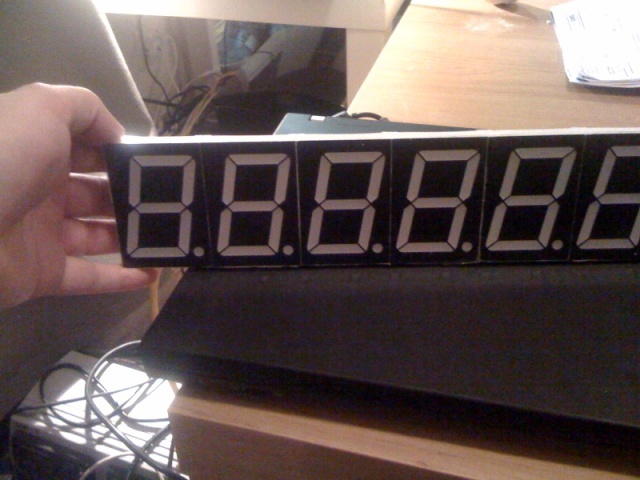
William got 8 of these modules from Kay, who agian bought them for almost nothing at eBay. :D (in Norway they cost about $25 each at the time of writing)
Anyways. As you see in the picture, william has glued the 8 digits together, wich we will put inside a box, and wire up with some pic18f4520 and some ENC28J60 for ethernet connectivity. Yes, the module will be stand-alone, only connected to ethernet, and display the current timestamp/timecode in Ardour/our DMX system.
Do we _really_ need it? no. Is it really cool? yes.
So, so far we have finally gotten the box for the device. It’s acctually a image frame, with an exceptionally deep frame on the backside to contain the whole shebang.
Here are some more “under construction” photos: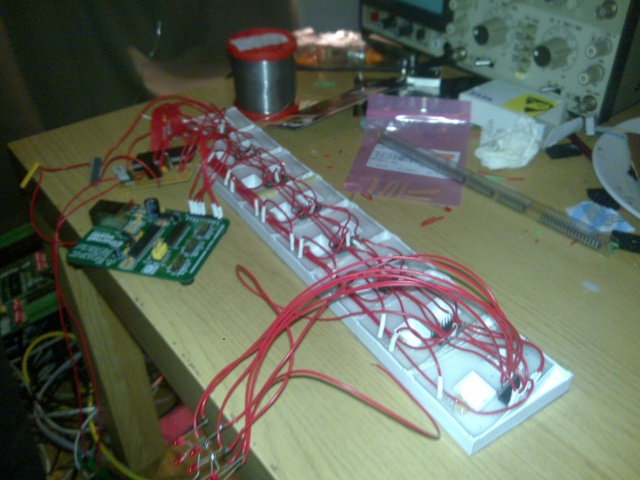
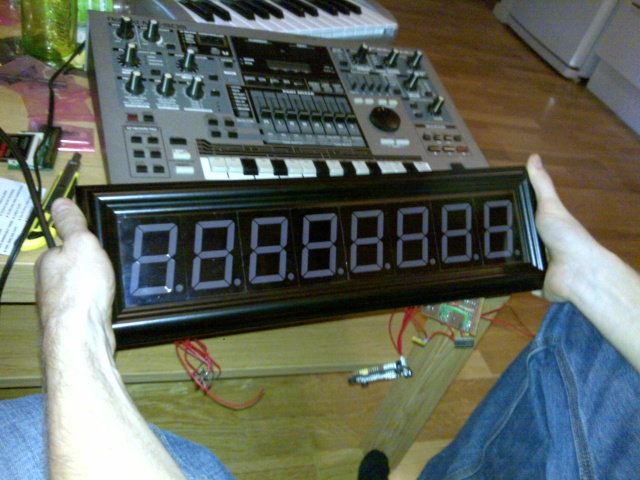
In the first photo you can (almost) see the PIC18F4520 on a vero board, with a connected prototype board with the ENC28J60 chip, which works perfectly and successfully outputs data to the (soon to be connected) displays when it receives timecode UDP data on port 1337 ;P
This project has not been the easiest, even though the concept is simple. I’m not the greatest engineer in regards to analog electronics. The problem is that the 7segment displays needs 7.2v, and uses common anode. This means that I cannot use the displays directly from the PIC processor. So i went on using a ULN2803A to drive the display. This solves the “common anode” problem. Now on to solving the 7.2v problem. I have as I said, not very much to say in the analog electronics world. So I went on, and found the first PNP transistor I could find. Kay was kind enough to donate them to us.
He had a bunch of 2N3906 transistors, wich seemed to be “workable”. So i set them up on a breadboard and after some fidling with resistors and pulling up the signal, to let the PIC pull it down, to enable the flow trough collector and emitter. This seemed to work great, so I soldered the whole shebang together.
Everything works great now, except that the display “fluctuates”. Seems like either the 5v regulator is too weak (it gets pretty hot, but I can’t check it, because my multimeter doesn’t want to measure current), or the transistors are a bit too sensitive. Sometimes, when there is traffic on the network the display fluctuates when the ethernet-leds light up. So something is not at it’s fully potential yet. But I’ll measure a bit when I get a working multimeter.
So here are the latest images(only thing missing is the 4 dots at the bottom):